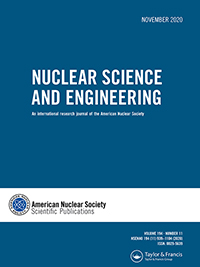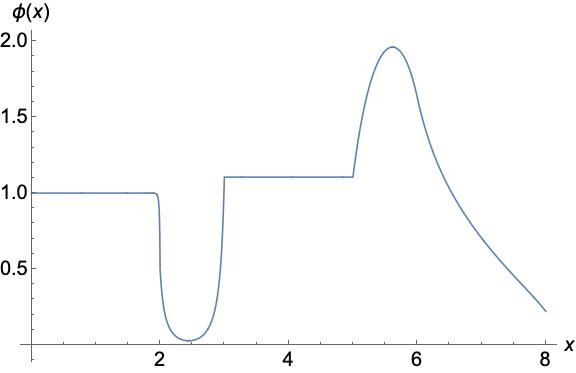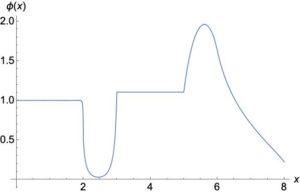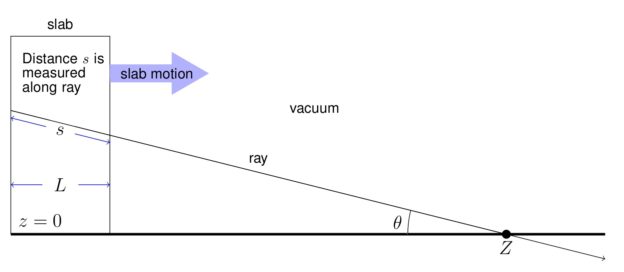When material is moving, the physics of radiative transfer changes to account for Doppler shifts in the frequency, and the motion of the material causes the opacities to need to be evaluated at different energies. This complication has been studied for a long time, but accurate numerical methods (and their implementation is a bit of a challenge).
One common locus of argument is how important these corrections are when the material is moving slow relative to the speed of light. Many of the correction terms appear to be small when the material speed is much smaller than the speed of light.
In a recent extended summary for the 2021 M&C Meeting, Nick Gentile and I developed some benchmark solutions for the spectrum of light that would be measured in front of a moving slab. We show that, even at a speed of 5% the speed of light, the spectrum one measures is significantly different when one either ignores the material motion corrections or leaves of some seemingly unimportant terms. Moreover, the errors that result from ignoring these terms get worse as the spectrum resolution is increased. See the full document here.
The Mathematica notebooks used to produce the benchmarks can be found on Github.



